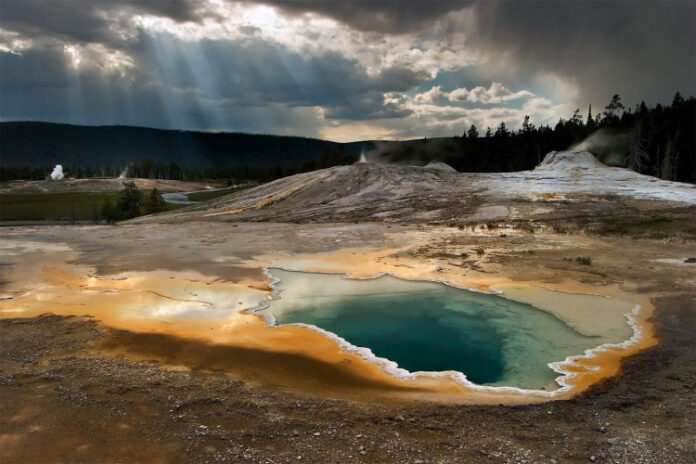New research is casting doubts on the frequency or even the possibility of a ‘super-eruption’ that could blot out the sun from the Earth with a thick veil of volcanic ash.
A joint research team from Washington State University and the Scottish Universities Environmental Research Centre said the biggest Yellowstone eruption on record was actually two different eruptions at least 6,000 years apart.
According to the study published in the June 2012 issue of the Quaternary Geochronology, these eruptions are thought to have created the Huckleberry Ridge around 2 million years ago. The first eruption generated 2,200 cubic kilometers of volcanic material, while the second, smaller eruption generated 290 cubic kilometers.
The first eruption is still considered to be ‘super’ according to the Volcanic Explosivity Index (VEI) and likely covered the sky in volcanic ash from California to the Mississippi River.
The VEI was developed by Chris Newhall of the U.S. Geological Survey (USGS) and Sephen Self at the University of Hawaii in 1982. The open-ended scale ranges from 0 to 8 and is based on the volume of material produced, eruption cloud height, and other qualitative observations. Small continuously erupting volcanoes, like those found in Hawaii, are considered a zero on the VEI. The 1980 Mount St. Helens eruption and the Vesuvius eruption in 79 C.E., both of which produced about 1 cubic km of volcanic material, rank in the middle of the pack at five on the VEI.
The recent study’s findings suggest that the volcanic formation known as the Island Park Caldera is more active than previously thought and could help geologists to more accurately predict its next seismic event. The caldera is actually comprised of two smaller calderas and stretches 58 miles from Wyoming to Idaho.
“The Yellowstone volcano’s previous behavior is the best guide of what it will do in the future,” said study co-author Ben Ellis of Washington State University. “This research suggests explosive volcanism from Yellowstone is more frequent than previously thought.”
Source: redOrbit (http://s.tt/1armv)
TBU NEWS



